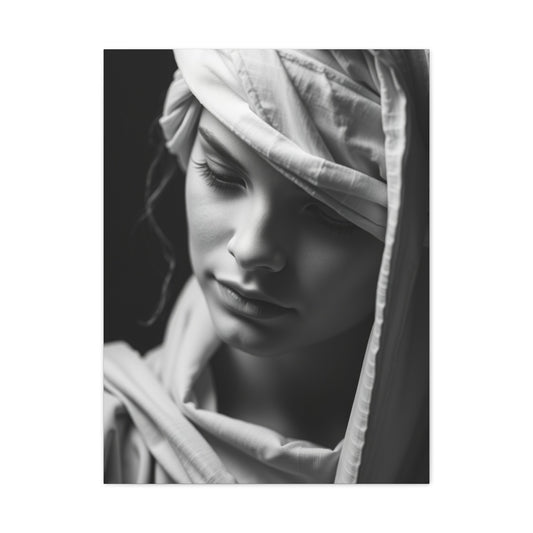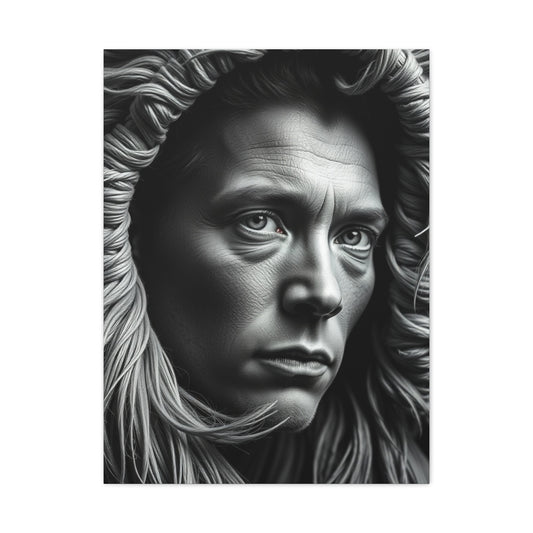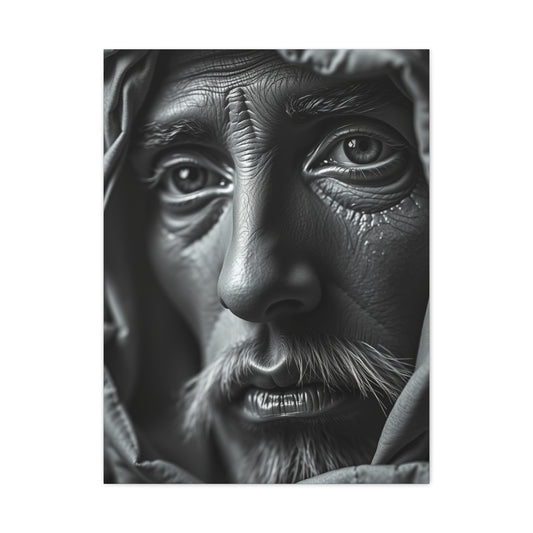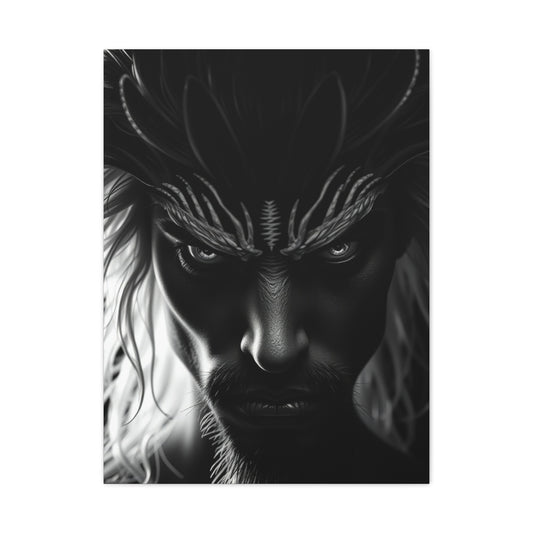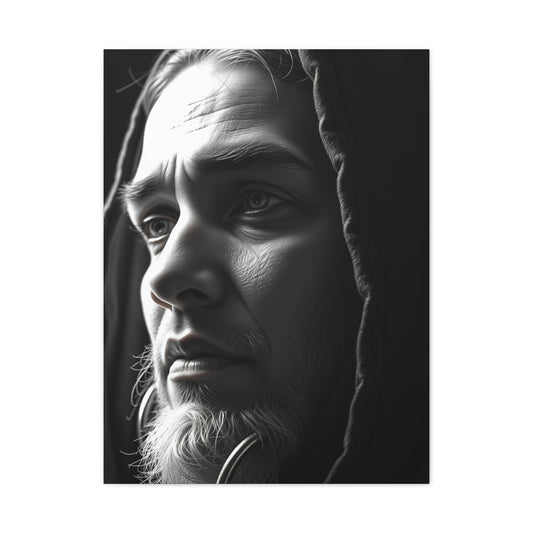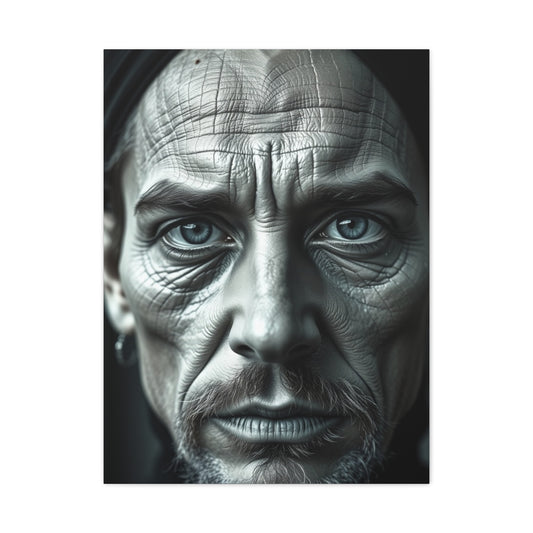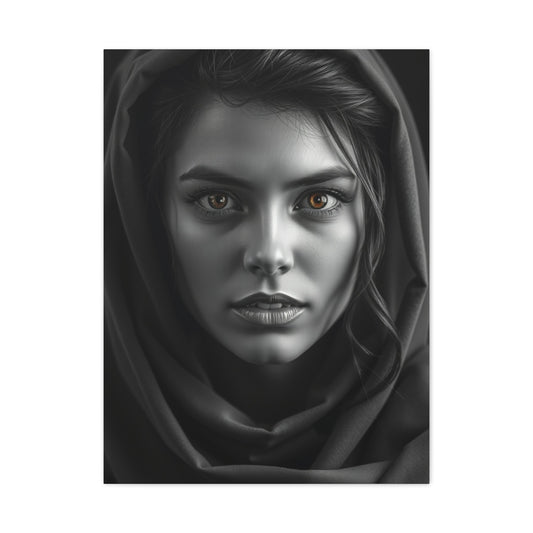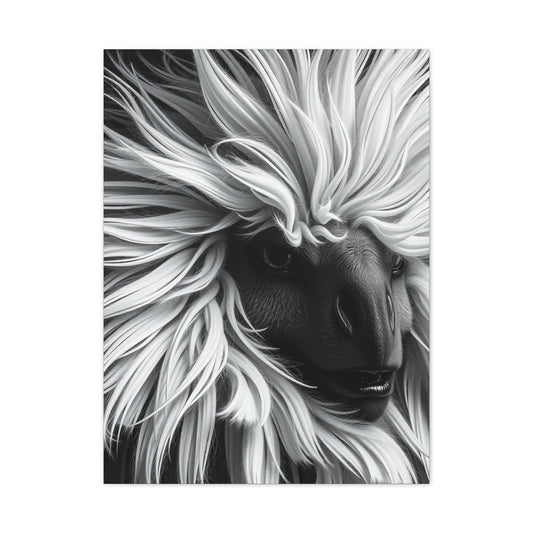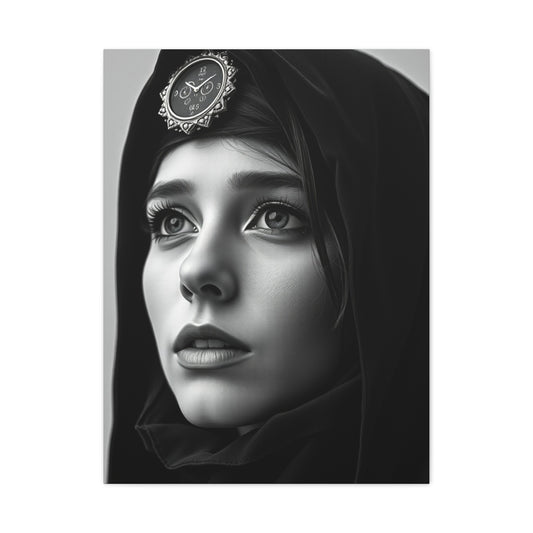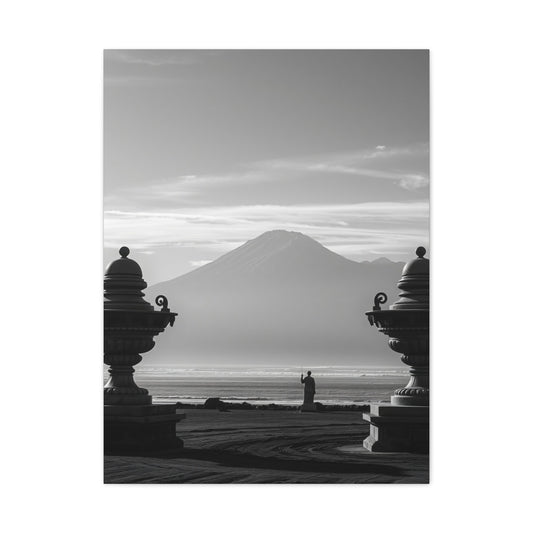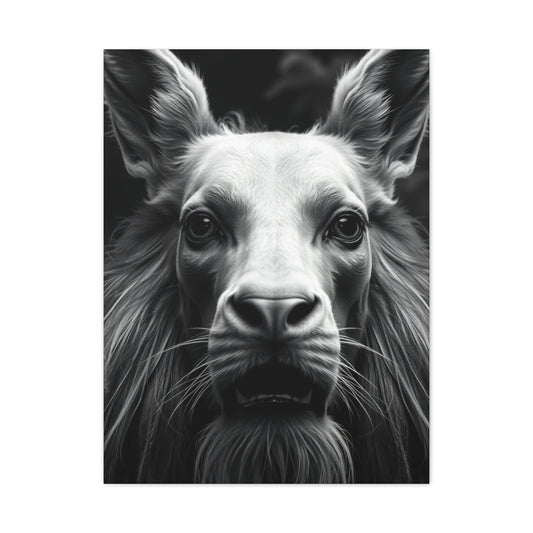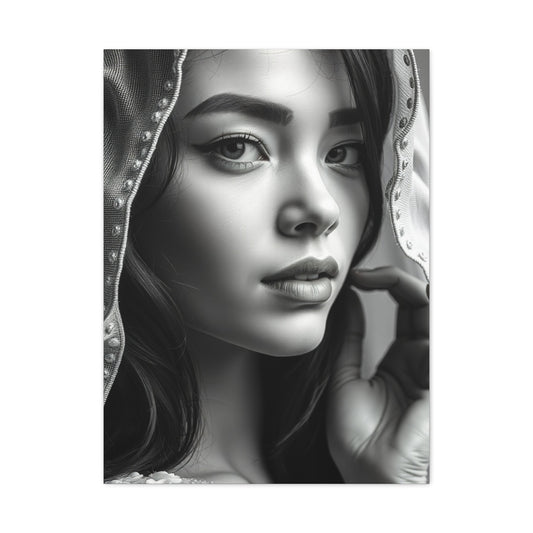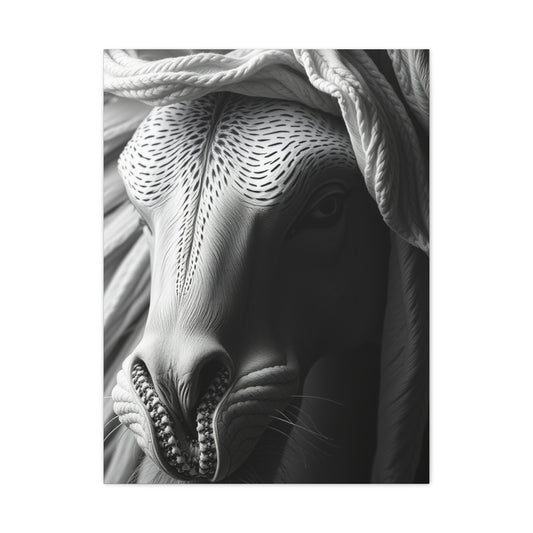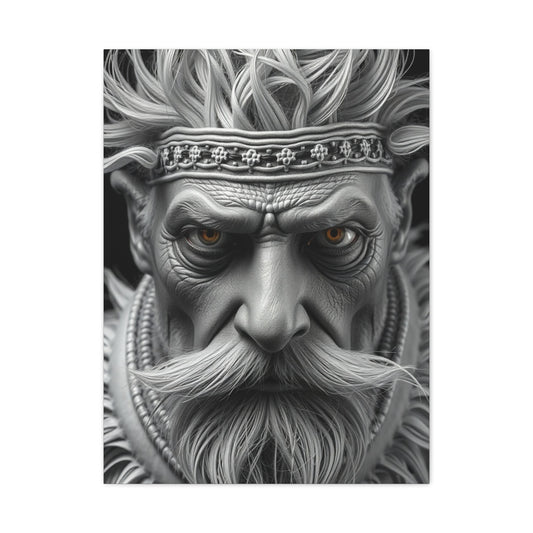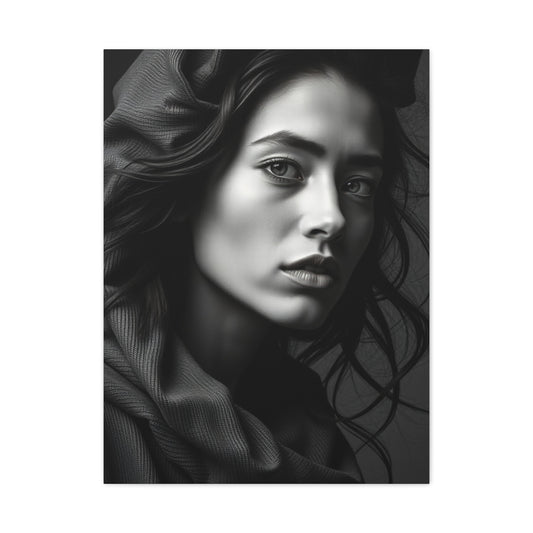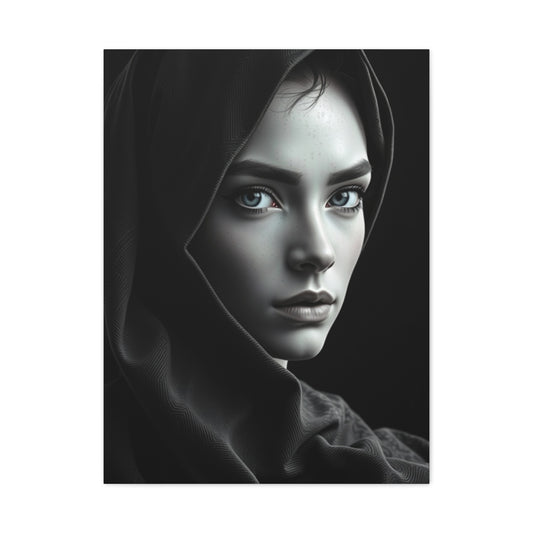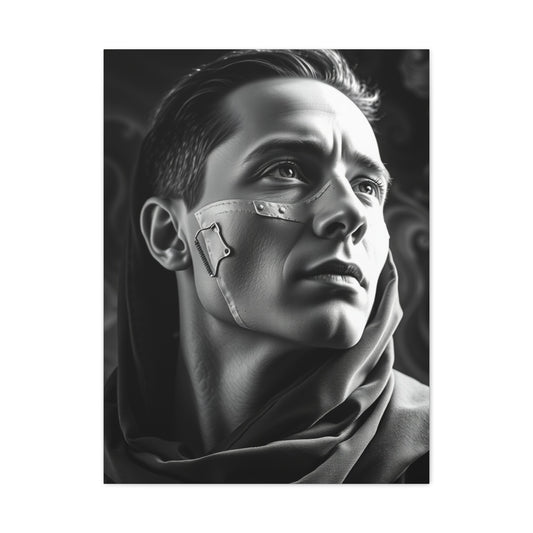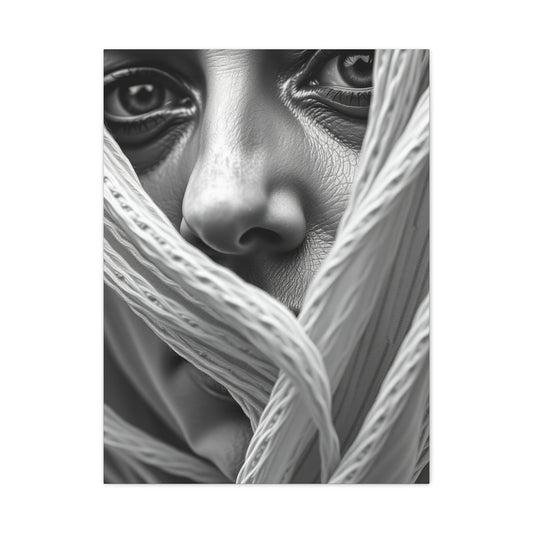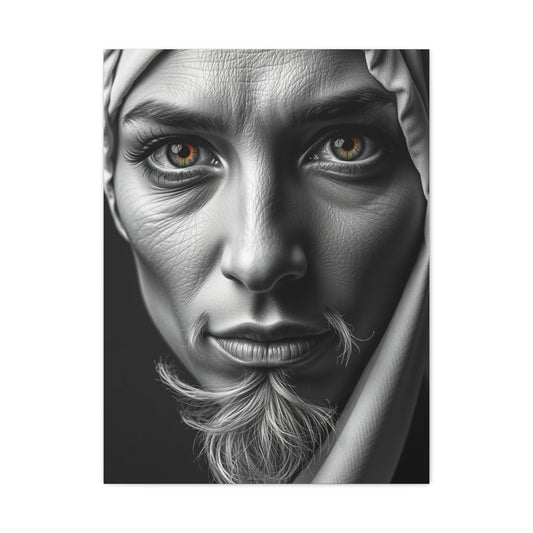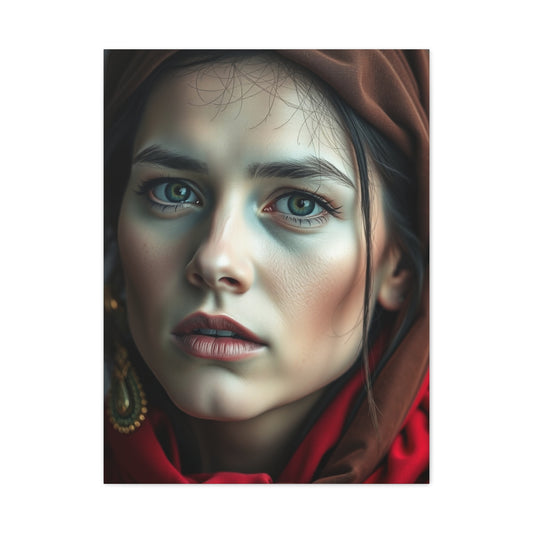Choosing Photography Wall Art to Match Your Home Aesthetic
Photography wall art has emerged as an essential element in modern home décor, offering a compelling way to fuse aesthetics with personal expression. Unlike generic decorations, photography prints provide a visual narrative, a glimpse into a moment frozen in time, capable of transforming mundane walls into captivating experiences. Selecting the ideal piece is not merely a decorative exercise; it is a journey into understanding the mood, energy, and purpose of each living space. In recent decades, photography has transcended its traditional role as documentation and entered the realm of fine art, becoming an integral part of interior design. Homeowners, interior enthusiasts, and art collectors alike seek prints that resonate emotionally while harmonizing with the existing décor, striking a delicate balance between creativity and functionality. The perfect photography wall art can imbue a room with serenity, dynamism, or boldness depending on the image, style, and placement, thus reflecting the essence of those who inhabit the space. From tranquil landscapes to intimate portraits, from abstract compositions to evocative wildlife photography, the diversity of prints allows a highly personalized approach to home decoration. As one explores the world of photography wall art, understanding its historical roots, conceptual foundations, and practical applications becomes crucial in making selections that are both meaningful and aesthetically cohesive.
Historical Background
The evolution of photography as a medium for wall art is intertwined with technological advancements and cultural shifts over centuries. Early photographic prints, limited by monochrome processes and fragile materials, were initially appreciated as scientific or documentary tools rather than decorative art. The 19th century witnessed innovations like daguerreotypes and albumen prints, which gradually elevated photography to a collectible form, often displayed in parlors and salons to signify cultural literacy and refined taste. By the early 20th century, movements such as Pictorialism and Modernism began framing photography as a legitimate art form, emphasizing composition, light, and emotion over mere replication of reality. Iconic photographers like Ansel Adams, Dorothea Lange, and Henri Cartier-Bresson showcased the potential of photography to evoke narrative, drama, and aesthetic resonance, paving the way for contemporary collectors to consider photography wall art as both an investment and a source of inspiration. This historical trajectory underscores how prints have transitioned from functional documentation to expressive tools capable of enhancing home décor. In today’s globalized art market, photography wall art reflects a fusion of cultural influences, technological experimentation, and individual expression, allowing homeowners to select prints that convey personal stories while embracing broader artistic trends.
Core Concepts and Foundations
At the heart of choosing photography wall art lies an understanding of the interplay between subject matter, color, scale, and emotional resonance. Core concepts include visual hierarchy, contrast, balance, and thematic coherence. The subject of the print sets the tone of a room: serene seascapes or gentle botanical studies instill calm, while dynamic urban vistas and wildlife photography infuse energy and curiosity. Color theory plays an equally pivotal role; harmonious palettes enhance cohesion, while contrasting hues draw attention to specific elements, creating a focal point that elevates interior aesthetics. Equally critical is scale: oversized prints command attention in expansive rooms, while smaller, clustered arrangements encourage intimate exploration and interaction. Texture, both in the medium and the presentation style—whether canvas, acrylic, or traditional paper—affects perception and spatial experience. Understanding these foundational elements equips homeowners with the ability to curate photography wall art that resonates on both visual and emotional levels. Moreover, personal style should guide choices, ensuring that the selected prints align with individual sensibilities and lifestyle, creating spaces that feel authentic and inviting.
Types and Categories
Photography wall art encompasses a broad spectrum of styles, genres, and techniques, each catering to different tastes and spatial requirements. Natural landscapes, including mountains, forests, oceans, and deserts, evoke tranquility and timelessness, making them ideal for bedrooms and relaxation areas. Urban and architectural photography captures the vibrancy of city life, offering dynamic energy suitable for living rooms, kitchens, or offices. Wildlife and nature prints provide a narrative of interconnected ecosystems, bringing the raw beauty of the natural world into the home, as exemplified by works like “Gentle Guardians Under Botswana’s Sky,” where antelopes graze against earthy landscapes, symbolizing harmony and depth. Abstract and conceptual photography, through unconventional perspectives and experimental techniques, stimulates imagination and introspection, often serving as conversation starters in communal spaces. Portraiture, whether intimate close-ups or larger-than-life depictions, conveys emotion and humanity, fostering connection and empathy. Black-and-white photography, characterized by tonal nuance and striking contrasts, lends a timeless elegance that complements minimalist or contemporary interiors. Limited edition prints and fine art photography collections offer exclusivity, providing homeowners with unique pieces that carry both aesthetic and investment value. By understanding these categories, one can match photography wall art to the intended ambiance, narrative, and visual harmony of each room, ensuring that the artwork resonates meaningfully with the space and its inhabitants.
Practical Applications
Applying photography wall art effectively involves thoughtful consideration of room purpose, mood, placement, color integration, and personal style. Each room offers distinct opportunities and challenges for art selection. In bedrooms, soothing imagery such as gentle seascapes, misty forests, or subtle monochrome compositions promotes restfulness and introspection. Living rooms, as social hubs, benefit from bolder or more dynamic prints, including cityscapes, wildlife action shots, or abstract expressionist photography that energize the environment while inviting conversation. Office spaces gain from imagery that inspires focus and creativity, such as minimalist landscapes, architectural details, or images with conceptual depth. The color palette of a room guides the selection of photography wall art; prints should complement existing furniture, fabrics, and wall colors without overwhelming the space. Matching tones subtly enhances cohesion, while deliberate contrast can highlight a centerpiece print, creating visual intrigue. Placement is another critical factor; large statement pieces above sofas or beds establish focal points, whereas smaller prints can form curated gallery walls, offering layered visual narratives. Size, orientation, and frame style—whether traditional, modern, or floating—affect how the print interacts with the environment, emphasizing either subtle integration or striking prominence. Limited edition prints elevate the décor with uniqueness and investment potential, while careful framing or material selection enhances durability, presentation, and impact. Above all, trust in personal intuition ensures that chosen photography wall art resonates emotionally, transforming spaces into reflections of individual identity, style, and taste. The combination of historical understanding, conceptual awareness, diverse categories, and practical considerations empowers homeowners to navigate the world of photography prints with confidence, creating interiors that are visually compelling and emotionally resonant.
Techniques and Methods
Selecting and displaying photography wall art requires understanding a variety of techniques and methods that enhance the visual appeal and emotional resonance of a space. One essential method is mastering composition, which dictates how the viewer's eye travels across the image. Principles such as the rule of thirds, leading lines, and symmetry guide the placement of elements within the frame, ensuring that the final print captivates and engages. Lighting techniques also play a pivotal role; the interplay of shadows, highlights, and natural or artificial illumination can dramatically alter perception, adding depth and texture to landscapes, portraits, or abstract photography wall art. Exposure, contrast, and tonal balance influence the mood and atmosphere conveyed by each print, allowing homeowners to evoke serenity, energy, or tension depending on the desired effect. Post-processing methods, including color grading, digital retouching, and subtle adjustments, refine the image while maintaining authenticity, ensuring that the photography wall art resonates both technically and aesthetically. Mounting and framing techniques further enhance the impact; choosing between traditional wooden frames, minimalist metal edges, or floating acrylic displays can complement the architectural and interior style of the room. Grouping multiple prints in curated sequences or creating thematic gallery walls leverages spatial relationships to establish harmony and narrative flow. Another advanced approach involves integrating mixed media, where photography is combined with subtle textures, embossing, or layering techniques, creating multidimensional visual experiences that captivate and intrigue. Understanding these methods empowers homeowners to approach photography wall art not merely as decoration but as an immersive storytelling tool, where every choice—from composition to presentation—amplifies the room’s aesthetic and emotional qualities.
Sustainability and Ethical Considerations
In contemporary interior design, sustainability has become an essential consideration when selecting wall art. Homeowners and collectors are increasingly drawn to pieces that not only enhance visual appeal but also reflect environmental responsibility. Eco-conscious production techniques, such as using recycled paper, water-based inks, or sustainably sourced frames, ensure that the creation of wall art leaves minimal ecological impact. Limited edition prints produced responsibly add both exclusivity and ethical value, offering homeowners artwork that is unique while supporting conscientious artistic practices. Moreover, selecting durable materials contributes to long-term sustainability, reducing the need for frequent replacements and preserving resources. Ethical considerations also extend to fair trade practices and recognition of artists’ rights, ensuring that the production and distribution of wall art respect creative labor and cultural authenticity. By prioritizing sustainability and ethical sourcing, homeowners can integrate wall art into their spaces not only as aesthetic objects but as statements of values, reflecting a lifestyle that balances beauty, conscience, and long-term environmental stewardship.
Global Influences in Wall Art
Wall art is increasingly shaped by a rich tapestry of global influences, where cultural motifs, traditional techniques, and international perspectives converge to create unique interior experiences. Exposure to diverse artistic traditions—from Asian minimalism to Scandinavian design, from African wildlife photography to European classical composition—enables homeowners to incorporate prints that celebrate both aesthetic sophistication and cultural storytelling. Travel-inspired photography wall art allows spaces to resonate with memories, experiences, or aspirational journeys, creating a bridge between personal narrative and broader cultural landscapes. Online galleries and virtual exhibitions have made international art more accessible, offering limited edition and rare prints from artists worldwide. Integrating global influences allows homeowners to craft interiors that feel eclectic yet cohesive, blending local sensibilities with international trends. The cross-cultural approach to wall art not only enriches visual diversity but also fosters curiosity, empathy, and appreciation for global creativity, turning interior walls into canvases that narrate stories from around the world.
Challenges and Common Mistakes
While the possibilities for incorporating photography wall art into home décor are vast, several challenges and common mistakes can undermine the intended effect. One frequent misstep is neglecting the scale and proportion of prints relative to the room. Oversized prints in small, confined spaces can feel overwhelming, while tiny images on expansive walls may appear lost and inconsequential. Similarly, ignoring the balance between color palettes and existing décor can result in visual dissonance, where the photography wall art clashes with furniture, wall tones, or textiles, disrupting the harmony of the space. Another challenge lies in inadequate lighting; even the most striking photography prints can appear flat or muted under poor illumination, diminishing the emotional and aesthetic impact. Homeowners also sometimes prioritize personal attachment over spatial suitability, selecting images that resonate emotionally but fail to complement the room’s purpose or mood. Overcrowding walls with too many prints can dilute the significance of each piece, making the space feel cluttered rather than curated. Conversely, placing prints too sparsely may fail to create cohesion or narrative flow. Additionally, overlooking the quality of materials, including paper, canvas, or mounting options, can affect durability, color fidelity, and overall presentation. Limited knowledge of framing options and mounting methods may result in styles that feel incongruent with the room’s aesthetic, such as pairing ornate frames with minimalist interiors. Awareness of these challenges enables homeowners to avoid common pitfalls and approach the selection and placement of photography wall art with strategic consideration, ensuring that each print contributes meaningfully to the room’s visual story.
Trends and Future Outlook
The world of photography wall art is continuously evolving, shaped by technological innovations, cultural shifts, and interior design trends. Contemporary homes increasingly favor large-scale, immersive prints that serve as focal points, transforming walls into dynamic landscapes or intimate portraits that engage viewers on multiple sensory levels. Minimalist aesthetics encourage monochrome or muted tones, emphasizing texture, light, and composition over vibrant color, while eclectic interiors embrace bold, abstract, and experimental photography wall art that challenges perception and evokes curiosity. Digital and augmented reality technologies are introducing new frontiers, allowing prints to integrate motion, interactive features, or changing perspectives that respond to ambient light and viewer proximity. Sustainability has emerged as a crucial consideration; environmentally conscious printing processes, recycled materials, and ethically sourced frames appeal to homeowners seeking both beauty and ecological responsibility. Online galleries and virtual exhibitions have democratized access to fine art photography, enabling collectors and homeowners to explore international artists, limited edition prints, and niche genres without geographical constraints. As customization becomes more prevalent, tailored photography wall art reflecting personal narratives, travel experiences, or bespoke concepts is gaining popularity, allowing spaces to become highly individualistic while remaining visually cohesive. The future suggests a continued blurring of boundaries between traditional fine art and functional interior decoration, with photography wall art serving as both aesthetic enhancement and immersive storytelling medium, adapting to technological advances and evolving tastes while retaining the emotional resonance that defines its timeless appeal.
Expert Insights
Professional photographers, interior designers, and art consultants emphasize several key considerations when selecting photography wall art for home décor. Experts consistently highlight the importance of cohesion between the artwork and the room’s function, advising that serene landscapes, botanical studies, or muted abstracts enhance relaxation zones, while energetic cityscapes, wildlife imagery, or conceptual pieces stimulate interaction and creativity in social or workspaces. Curators advocate for limited edition photography prints as a means of ensuring uniqueness and investment potential, encouraging homeowners to explore curated collections that offer both aesthetic richness and exclusivity. Framing experts underscore the significance of materials and mounting, noting that the choice of wood, metal, acrylic, or canvas can dramatically influence how the artwork interacts with light, space, and viewer perception. Designers often recommend strategic lighting placement, such as accent or track lights, to highlight textures, contrasts, and subtle tonal variations, elevating the visual impact of photography wall art. Experts also advise considering narrative continuity; grouping prints with thematic, color, or compositional links can create immersive gallery walls that guide the eye and evoke layered storytelling, enhancing the room’s personality. Digital consultants suggest leveraging online platforms to preview prints within virtual room layouts, facilitating informed choices that align with both style and scale. Collectively, expert guidance emphasizes a balance between personal resonance and spatial harmony, advocating an approach where photography wall art is thoughtfully integrated into the home environment, enhancing ambiance, aesthetic cohesion, and emotional engagement. By embracing professional insights while trusting personal intuition, homeowners can curate spaces that feel deliberate, sophisticated, and authentically expressive, where each photography print contributes to a holistic and inspiring interior narrative.
Advanced Techniques for Displaying Wall Art
Displaying wall art effectively goes beyond mere hanging; it involves deliberate strategies that harmonize the artwork with the architectural and emotional dimensions of a space. Layering techniques, such as arranging multiple prints at varying heights or combining different formats, allow for depth and visual rhythm that guide the viewer's eye across the wall. The interplay between texture and medium is increasingly prominent; photographic prints on canvas, metallic surfaces, or acrylic panels introduce dimensionality, enhancing both tactile and visual engagement. Lighting is a critical consideration, where directional spotlights, ambient illumination, or natural light interplay creates shifting perspectives, revealing subtle details and tonal variations. For those seeking a more experimental approach, projection and mixed media techniques allow wall art to interact with the environment, casting ephemeral shadows or creating reflective surfaces that evolve with changing light and season. Spatial alignment with furniture, architectural features, and floor plan enhances cohesion, ensuring that wall art appears intentional rather than incidental. Negative space is equally important; leaving areas of wall unadorned prevents visual congestion and emphasizes focal pieces. Advanced curatorial techniques, often inspired by gallery practices, encourage thematic groupings, narrative progression, and balance between dynamic and calming imagery. Homeowners can elevate the impact of wall art by embracing these multifaceted strategies, transforming walls into immersive, layered experiences rather than static decoration.
Sustainability and Ethical Considerations
Sustainability has become a defining consideration in contemporary wall art, reflecting a shift in both consumer awareness and artistic responsibility. Homeowners and collectors increasingly seek pieces that balance aesthetic value with environmental stewardship, recognizing that every choice in materials, production, and framing has a tangible impact. Eco-conscious photographers and printing studios now employ recycled and archival-quality papers, water-based inks, and sustainably sourced frames, significantly reducing the ecological footprint of each print. Even the selection of adhesives, coatings, and protective laminates is guided by environmentally safe practices, ensuring that wall art is durable yet responsibly manufactured.
Limited edition prints offer a dual advantage in sustainability and ethical responsibility. By limiting production, these prints reduce waste while maintaining exclusivity, allowing collectors to own pieces that are both distinctive and conscientious. Ethical sourcing goes beyond environmental considerations to include artist recognition, fair compensation, and transparency in provenance, creating a culture of integrity within the art market. Supporting local artisans and niche studios further reinforces this ethical approach, as it nurtures regional creative communities and preserves cultural heritage. Handcrafted frames, bespoke printing processes, and small-batch editions create a direct link between artist and homeowner, establishing value beyond monetary investment.
Sustainable wall art also emphasizes longevity. Homeowners can invest in prints that are timeless and versatile, ensuring that they remain relevant across changing interior trends. Durable materials, resistant to fading or warping, allow wall art to maintain its visual appeal over decades. The combination of sustainability and artistic innovation inspires a dialogue between ecological responsibility and aesthetic sophistication, where eco-conscious choices do not compromise visual impact. Moreover, sustainability can extend to the lifestyle context of the interior; for instance, wall art crafted with recycled textiles, biodegradable frames, or reclaimed wood harmonizes with other environmentally minded design choices, creating a cohesive, responsible, and aesthetically refined environment.
Another emerging aspect is circularity in art, where prints or frames can be repurposed or recycled at the end of their life cycle. Artists and galleries are exploring trade-in programs or take-back initiatives, allowing collectors to return old prints in exchange for discounts or credits toward new acquisitions. This model not only reduces waste but fosters a culture of continuous engagement with sustainable wall art. Homeowners increasingly consider the broader narrative of the art they choose, aligning the ethical values behind production with the stories conveyed through imagery, whether it be natural landscapes, cultural motifs, or abstract compositions. By embedding sustainability at every stage—from creation to display—wall art transforms from mere decoration into a conscious lifestyle statement that resonates with both aesthetic taste and ethical priorities.
Global Influences in Wall Art
Wall art is no longer limited to regional or national aesthetic norms; it is shaped by a vibrant global exchange of ideas, styles, and techniques. Exposure to diverse cultural influences enriches contemporary interior design, allowing homeowners to curate collections that reflect personal taste while embracing global consciousness. Asian minimalism, with its focus on simplicity, negative space, and meditative compositions, contributes a sense of calm and intentionality to modern interiors. Scandinavian design emphasizes functionality, clean lines, and light, neutral palettes, often complementing minimalist photography wall art or muted abstract pieces. African wildlife photography and indigenous motifs introduce vibrant colors, dynamic patterns, and narrative depth, bringing vitality and storytelling to home walls.
Travel-inspired photography wall art enables homeowners to embed memories, experiences, and aspirations into domestic spaces. Panoramic cityscapes, serene natural landscapes, or cultural scenes from around the world transform walls into visual memoirs that invite engagement and reflection. The global reach of digital platforms and online galleries democratizes access to rare, limited edition, and international prints, removing geographical barriers that once constrained collectors. Through this connectivity, homeowners can acquire pieces from artists in distant countries, blending diverse aesthetic traditions into cohesive interior narratives.
Eclectic curations that mix global influences with personal resonance are increasingly popular. For example, a living room may feature a Japanese-inspired minimalist photograph alongside a bold African wildlife print, unified by complementary color accents or shared compositional techniques. Such arrangements celebrate cross-cultural dialogue while remaining visually coherent, ensuring that wall art functions both as a storytelling medium and a decorative anchor. Beyond aesthetic enrichment, global influences in wall art foster empathy, cultural awareness, and curiosity, creating interiors that educate and inspire as much as they decorate.
Furthermore, global artistic collaborations are emerging, where artists from different regions co-create prints that merge stylistic philosophies, media, and cultural narratives. These collaborations result in hybrid wall art that transcends traditional genre boundaries, reflecting the increasingly interconnected world of contemporary interior design. Homeowners who embrace such pieces are not merely decorating their walls; they are participating in a dialogue between cultures, histories, and creative visions, fostering spaces that are cosmopolitan, reflective, and intellectually stimulating.
Integrating Wall Art with Interior Design
Wall art functions as a unifying element within interior design, connecting architecture, furnishings, color palettes, and personal narrative into cohesive experiences. In open-plan spaces, strategic placement of photography wall art can delineate functional zones, define seating areas, or accentuate architectural features such as exposed beams, alcoves, or niche walls. In smaller rooms or intimate nooks, carefully selected prints can create a sense of depth and visual interest without overwhelming the space.
Color harmonies between wall art and interior elements are central to successful integration. Complementary tones can tie together furniture, textiles, and architectural finishes, creating a cohesive visual language that enhances the overall mood. Conversely, deliberate contrasts may be employed to draw attention to a focal piece, adding dynamism and layering within the space. Homeowners are increasingly aware that furniture scale and arrangement influence wall art placement; large statement prints above a sofa, dining table, or bed provide balance and proportion, while smaller, clustered prints can form gallery walls that encourage visual exploration and narrative continuity.
Seasonal rotation is another emerging strategy in interior design, where wall art is swapped or repositioned to reflect changing moods, weather, or lifestyle patterns. This dynamic approach allows interiors to remain fresh and responsive, while also maximizing engagement with existing artwork. Layering wall art with mirrors, sculptural objects, or decorative elements creates multidimensional focal points that stimulate visual exploration and elevate the immersive quality of interiors. Texture and material choices—such as matte canvas, reflective acrylic, or metallic finishes—interact with lighting to emphasize depth, tonal subtleties, and details, enhancing both the artwork and the surrounding space.
Lighting is particularly significant in the integration of wall art with interior design. Natural light, accent lighting, and spotlights each shape perception, highlighting textures, contrasts, and fine details in photography wall art. The direction, intensity, and warmth of light can transform the visual and emotional impact of a piece, making careful lighting planning essential. Homeowners can use track lighting, recessed fixtures, or even adjustable LED panels to control how each artwork is experienced throughout the day, ensuring that prints maintain their intended effect under varying conditions.
Beyond aesthetics, wall art contributes psychologically and emotionally to interior environments. Thoughtful selection and placement can evoke calm, inspire creativity, or energize social spaces. Narrative-driven arrangements allow walls to tell stories, whether reflecting travel experiences, cultural heritage, or personal milestones. By integrating these considerations into the design process, wall art transcends decoration, functioning as both a visual anchor and a medium for personal expression.
Emerging technologies also play a role in integration, with digital frames, interactive displays, and augmented reality solutions offering dynamic ways to adapt wall art to evolving interiors. Homeowners can now rotate collections virtually, experiment with scale and placement, and preview effects before committing to permanent installation. These innovations enhance flexibility and personalization, allowing wall art to adapt seamlessly to lifestyle changes, spatial modifications, or evolving tastes.
In conclusion, the thoughtful integration of sustainability, global influences, and strategic design ensures that wall art becomes a transformative element in the home. It not only enhances visual appeal but also reflects ethical priorities, cultural awareness, and personal narrative. By combining eco-conscious practices, cross-cultural inspiration, and meticulous interior design integration, homeowners can create spaces where wall art enriches aesthetics, evokes emotion, and tells meaningful stories, transforming interiors into immersive, sophisticated, and conscious environments.
Emotional and Psychological Impact
The psychological influence of wall art on inhabitants is profound, often extending beyond the conscious recognition of a space's aesthetic qualities. Art has the ability to subtly shape mood, cognition, and even behavioral responses, creating environments that promote mental and emotional well-being. Calming imagery, such as tranquil landscapes, gentle water scenes, soft monochrome studies, or serene abstract compositions, can alleviate stress and foster a sense of peace and relaxation. Bedrooms, meditation corners, or reading nooks benefit greatly from such thoughtfully curated prints, providing safe havens where the mind can pause, recover, and reflect. The presence of wall art in these contexts encourages mindfulness, helping inhabitants cultivate moments of quiet introspection amid the demands of daily life.
Conversely, vibrant and dynamic pieces—like energetic cityscapes, expressive wildlife photography, or bold abstract compositions—stimulate creativity, mental engagement, and motivation. Such wall art is ideal for home offices, studios, creative spaces, or communal areas where energy and focus are desirable. The interplay of color, form, and scale in these prints can evoke excitement, promote cognitive alertness, and even inspire innovative thought. For instance, a large-scale abstract in shades of red and orange may energize a space, while a series of cityscape photography wall art pieces may invoke curiosity and exploration, encouraging occupants to mentally traverse distant locations.
Narrative-driven wall art plays an equally significant role by engaging memory, empathy, and contemplation. Photographs or compositions that tell a story—such as depictions of historical moments, cultural rituals, or personal milestones—invite viewers to pause, reflect, and emotionally connect. This storytelling quality transforms interiors into immersive experiences, where each wall art piece contributes to a broader narrative within the home. When curated intentionally, these prints provide continuity and cohesion across multiple rooms, reinforcing personal identity, cultural awareness, and emotional resonance.
Strategic placement enhances the psychological effects of wall art. Focal pieces positioned at eye level in high-traffic areas naturally draw attention and serve as conversation starters, while smaller supporting prints encourage discovery, guiding visitors’ gaze across a curated visual journey. Layering techniques, where prints are combined with mirrors, sculptural objects, or dimensional décor, amplify both visual interest and psychological impact. The balance between focal and supporting elements is critical, as overcrowding or poorly proportioned arrangements can create visual tension or stress, diminishing the intended benefits of the artwork.
Homeowners can further optimize the emotional impact of wall art by aligning pieces with functional goals and mood intentions for each room. For example, bedrooms and relaxation areas benefit from soft color palettes, organic forms, and minimalistic compositions, whereas creative studios or living areas can embrace bold contrasts, intricate patterns, and kinetic imagery. Seasonal rotation of wall art introduces another dimension, allowing interiors to reflect changes in natural light, climate, or lifestyle rhythms. Spring and summer might feature nature-inspired prints with bright, uplifting tones, while autumn and winter might incorporate muted or monochrome photography wall art to evoke warmth and contemplation.
Psychological studies increasingly affirm that exposure to aesthetically pleasing environments influences cognitive performance, emotional regulation, and even physical health. Wall art contributes to these outcomes by activating visual and emotional pathways, stimulating both conscious and subconscious processing. Thoughtfully curated interiors thus evolve from mere functional spaces into transformative environments, where wall art enhances emotional well-being, supports personal growth, and fosters meaningful interactions among inhabitants. By embracing these dimensions, homeowners can cultivate interiors that are not only visually stunning but also psychologically enriching.
Emerging Materials and Formats
The landscape of wall art is rapidly evolving, with innovative materials and display formats expanding the creative possibilities available to homeowners. Traditional photographic prints on archival paper remain popular for their classic texture, color fidelity, and longevity. However, contemporary interiors increasingly favor alternative materials such as acrylic panels, metallic substrates, and canvas wraps, each contributing unique qualities to the perception of wall art. Acrylic, for instance, enhances depth and luminosity, creating a visual effect where colors appear more vivid and details more pronounced. Metallic surfaces introduce reflective elements that interact with ambient light, creating dynamic visual shifts as lighting conditions change throughout the day. Canvas wraps offer tactile richness, imbuing photographic prints with painterly texture and presence, elevating them from decorative objects to immersive visual experiences.
Three-dimensional and sculptural wall art further expands the possibilities for engagement, introducing tactile interaction into traditionally flat compositions. Layered panels, relief textures, or multi-plane arrangements invite viewers to explore surfaces from different angles, stimulating both visual and haptic perception. Transparent and semi-transparent media interact with light and shadow, producing ethereal effects that shift with the movement of the sun or artificial lighting. For example, layered acrylic panels with embedded photographic elements can create the illusion of depth, making imagery appear to float or change depending on perspective.
Mixed media compositions blur the boundaries between photography, painting, digital manipulation, and textural overlays, creating works that challenge conventional notions of wall art. By combining traditional photography with paint splashes, geometric cutouts, or digital enhancements, artists produce visually complex pieces that function as both decor and interactive storytelling tools. Modular systems, designed to allow the rotation, rearrangement, or addition of elements over time, empower homeowners to curate evolving galleries without committing to permanent installations. This adaptability ensures that wall art remains relevant and engaging, reflecting both seasonal changes and personal evolution.
Technological integration represents one of the most significant advancements in contemporary wall art. Digital displays, smart frames, and augmented reality installations enable homeowners to transform static walls into dynamic canvases. Digital frames can cycle through curated collections, respond to environmental cues, or integrate with smart home systems to alter imagery based on time of day or mood settings. Augmented reality allows viewers to interact with wall art through smartphones or AR devices, revealing hidden layers, historical context, or multimedia narratives embedded within prints. These innovations expand the concept of wall art beyond decoration, positioning it as an interactive, responsive element within the home.
Emerging formats also address practical considerations, such as ease of installation, maintenance, and durability. Lightweight composite materials, magnetic mounting systems, and modular panels simplify the display of large or complex wall art arrangements. Protective coatings, UV-resistant surfaces, and archival-grade printing methods enhance longevity, ensuring that the vibrancy and integrity of prints persist over time. These advancements democratize access to high-quality wall art, enabling homeowners to experiment with ambitious layouts and multi-material installations without prohibitive costs or technical barriers.
The convergence of material innovation and technological enhancement enables new approaches to storytelling, mood creation, and spatial interaction. Wall art can now transform based on external conditions, such as changing light, seasonal adjustments, or even viewer proximity. Homes can host interactive exhibitions, rotate thematic collections digitally, or combine traditional prints with AR overlays, enriching visual engagement and emotional connection. This evolution reflects broader trends in interior design, where flexibility, personalization, and multi-sensory experiences are increasingly valued.
Finally, emerging materials and formats align closely with sustainability initiatives. Durable, recyclable, or modular components reduce waste, while digital and mixed-media approaches minimize the need for physical replication of prints. Homeowners can therefore pursue bold, experimental wall art strategies without compromising environmental responsibility. The integration of cutting-edge materials, interactive technologies, and sustainable practices positions wall art as a dynamic, adaptive, and expressive medium capable of transforming interiors into spaces that are visually captivating, emotionally resonant, and intellectually stimulating.
Future Outlook
The future of wall art is defined by personalization, interactivity, and integration with broader lifestyle and technological trends. Customization is becoming increasingly accessible, allowing homeowners to commission unique prints, incorporate personal narratives, or adjust scale, format, and medium to suit individual spaces. Digital and smart display technologies offer dynamic wall art that evolves with time, light, or viewer interaction, transforming traditional static installations into living experiences. Sustainability will continue to shape production choices, with eco-conscious materials, ethical sourcing, and local artisan collaboration taking center stage. Cross-cultural influences and global accessibility enable eclectic, cosmopolitan collections that celebrate diversity and narrative richness. Emotional resonance remains paramount, with homeowners prioritizing imagery that aligns with mood, values, and identity. Educational and immersive experiences are emerging, where wall art not only decorates but informs, inspires, and connects communities through storytelling and cultural exchange. These trends indicate that wall art will increasingly function as an integrative, adaptive, and expressive element within interiors, bridging aesthetics, technology, and human experience.
Conclusion
Wall art occupies a unique intersection between creativity, emotion, and design, transforming interiors into immersive, meaningful spaces. From foundational principles of composition, color, and scale to advanced techniques in layering, lighting, and curatorial strategy, each decision shapes how the artwork interacts with both room and observer. Contemporary trends highlight large-scale immersive prints, mixed media experimentation, sustainable production, and technological integration, reflecting evolving tastes and ethical priorities. Global influences expand aesthetic horizons, while personalization and narrative-driven curation ensure that interiors resonate on a deeply individual level. Wall art also possesses psychological and emotional potency, subtly shaping mood, cognition, and ambiance, and fostering reflection, creativity, and engagement. Emerging materials, formats, and digital innovations offer unprecedented flexibility and interactivity, allowing homeowners to adapt spaces dynamically while maintaining aesthetic cohesion. The synthesis of tradition, innovation, and personal expression ensures that wall art remains a cornerstone of interior design, offering both beauty and meaning. By understanding these principles, embracing emerging trends, and curating with intention, homeowners can transform walls into compelling visual narratives, spaces that are not only decorative but immersive, emotionally resonant, and uniquely expressive of personal identity and style.

